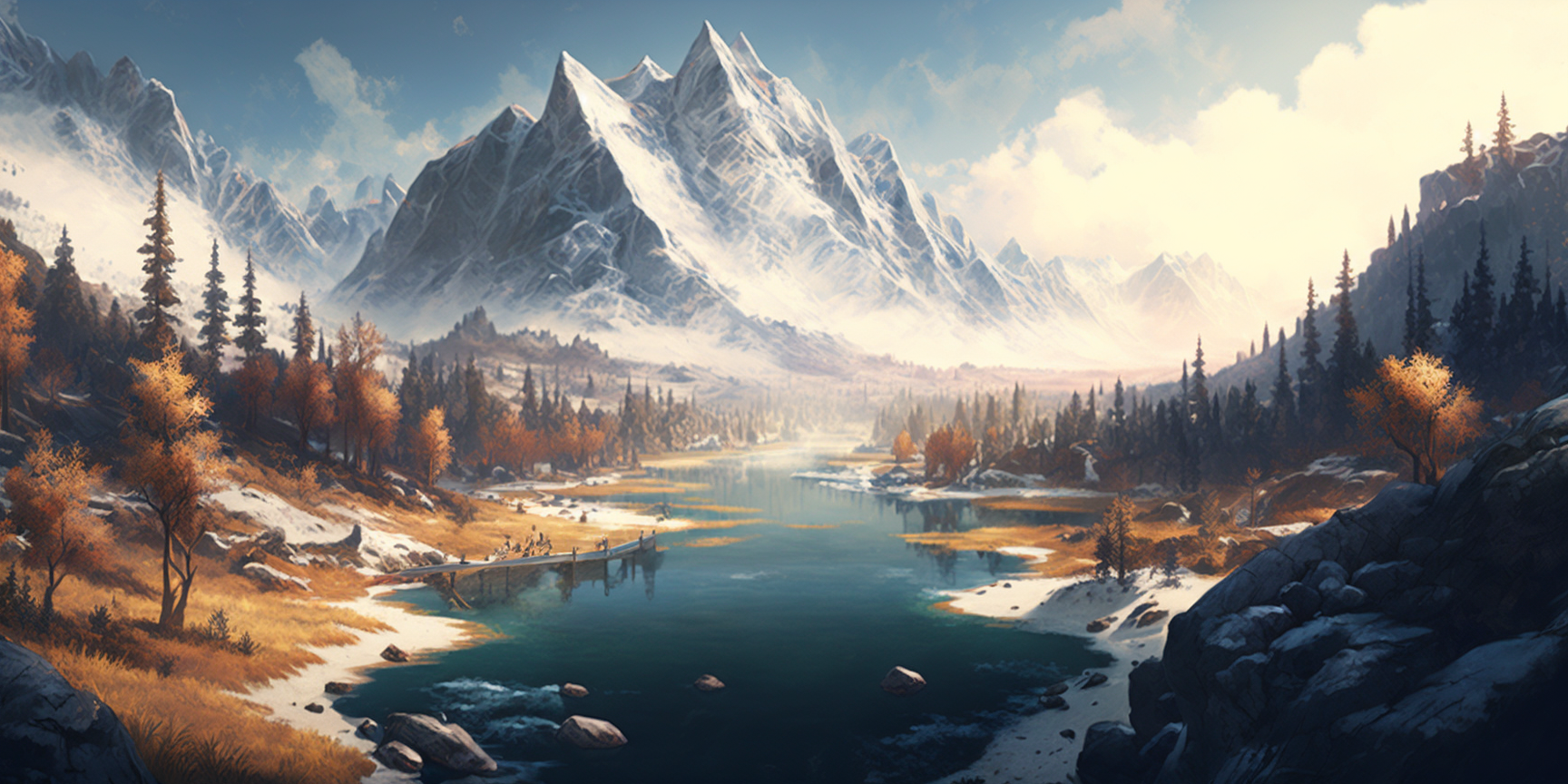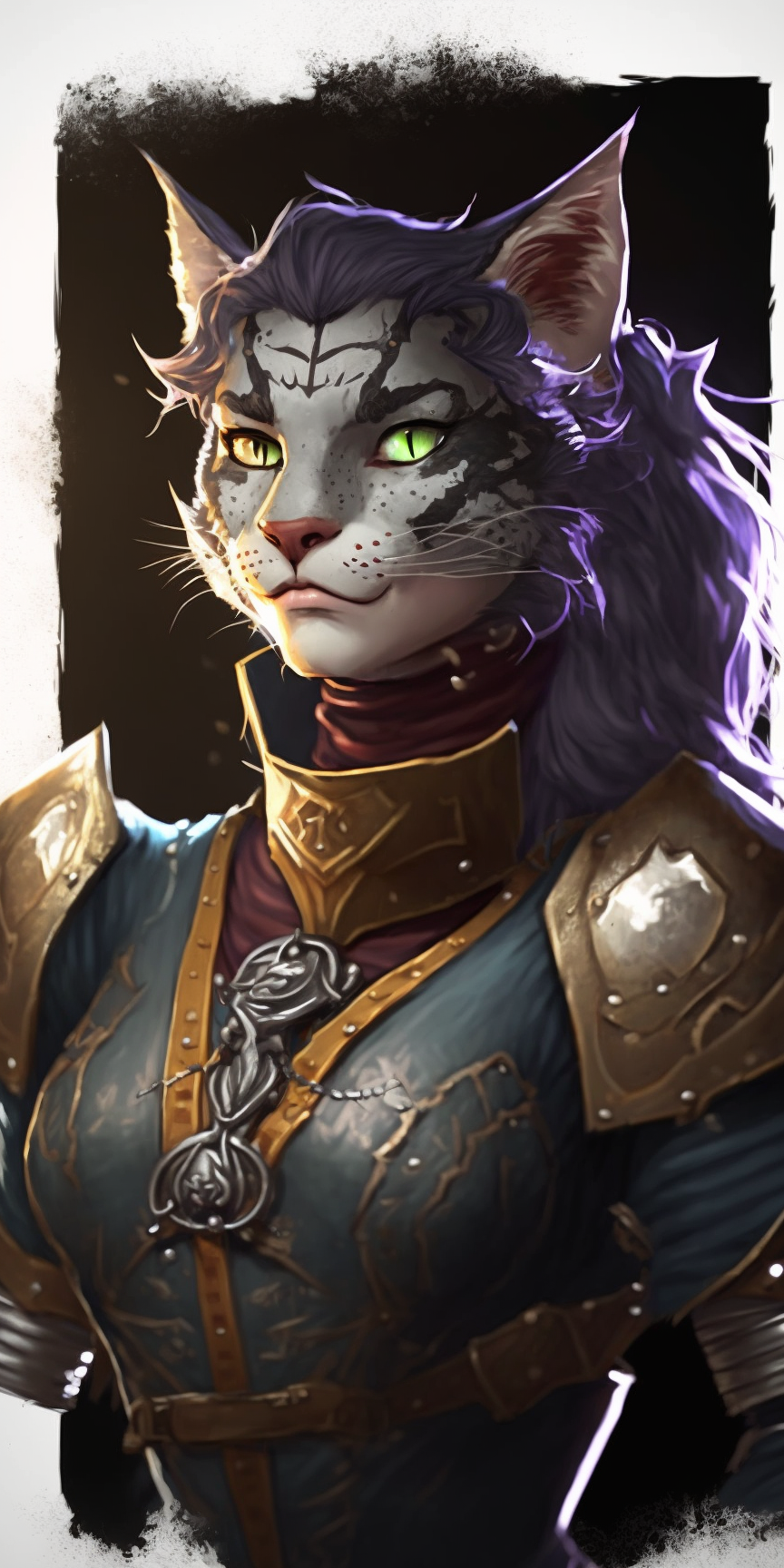Catfolk
Catfolk are a race of natural explorers who rarely tire of trailblazing, but such trailblazing is not limited merely to the search for new horizons in distant lands. Many catfolk see personal growth and development as equally valid avenues of exploration. While most catfolk are nimble, capable, and often active creatures, there is also a strong tendency among some catfolk to engage in quiet contemplation and study. Such individuals are interested in finding new solutions to age-old problems and questioning even the most steadfast philosophical certainties of the day. They are curious by nature, and catfolk culture never discourages inquisitiveness, but rather fosters and encourages it. Many are seen as quirky extroverts by members of other races, but within catfolk tribes there is no shame attached to minor peculiarities, eccentricities, or foolhardiness. All but the most inwardly focused catfolk enjoy being the center of attention, but not at the expense of their tribe, whether it’s the one the catfolk are born into or the tribe they choose through the bonds of friendship with other creatures. catfolk tend to be both generous and loyal to their family and friends.
Physical Description
In general, catfolk are lithe and slender, standing midway between dwarves and humans in stature. While clearly humanoid, they possess many feline features, including a coat of soft fine fur, slit pupils, and a sleek, slender tail. Their ears are pointed, but unlike those of elves, are more rounded and catlike. They manipulate objects as easily as any other humanoid, but their fingers terminate in small, sharp, retractable claws. These claws are typically not powerful enough to be used as weapons, but some members of the species—either by quirk of birth or from years of honing—can use them with deadly effect. Feline whiskers are not uncommon, but not universal, and hair and eye color vary greatly.
Society
While self-expression is an important aspect of catfolk culture, it is mitigated by a strong sense of community and group effort. In the wild, catfolk are a hunter-gatherer tribal people. The pursuit of personal power never comes before the health and well-being of the tribe. More than one race has underestimated this seemingly gentle people only to discover much too late that their cohesion also provides them great strength.
Catfolk prefer to be led by their most competent members, usually a council of sub-chieftains chosen by their peers, either though consensus or election. The sub-chiefs then choose a chieftain to lead in times of danger and to mediate disputes among the sub-chiefs. The chieftain is the most capable member of the tribe, and is often magically talented. catfolk who settle in more urban and civilized areas still cling to a similar tribal structure, but often see friends outside the tribe, even those from other races, as part of their extended tribe. Within adventuring groups, catfolk who do not consider themselves the obvious choice as chieftain often defer to the person who most resembles their cultural ideal of a chieftain.
Relations
Adaptable and curious, catfolk get along with almost any race that extends reciprocal goodwill. They acclimate easily to halflings, humans, and especially elves. catfolk and elves share a passionate nature, as well as a love of music, dance, and storytelling; elven communities often gently mentor catfolk tribes, though such elves are careful not to act in a patronizing manner toward their feline friends. Gnomes make natural companions for catfolk, as catfolk enjoy gnomes’ strange and obsessive qualities. catfolk are tolerant of kobolds as long as the reptilian beings respect the Catfolk’s boundaries. The feral nature of orcs stirs as much puzzlement as it does revulsion among catfolk, as they don’t understand orcs’ savagery and propensity for self-destruction. Half-orcs, on the other hand, intrigue catfolk, especially those half-orcs who strive to excel beyond the deleterious and hateful nature of their savage kin. catfolk often view goblins and ratfolk as vermin, as they disdain the swarming and pernicious tendencies of those races.
Ethics and Religion
With community and unselfish cooperation at the center of their culture, as well as a good-natured curiosity and willingness to adapt to the customs of many other races, most catfolk tend toward good alignments. The clear majority of catfolk are also chaotic, as wisdom is not their strongest virtue; nevertheless, there are exceptions with cause.
Adventurers
Natural born trackers, the hunter-gatherer aspect of their tribes pushes many catfolk toward occupations as rangers and druids by default, but such roles don’t always speak to their love of performance art, be it song, dance, or storytelling. catfolk legends also speak of a rich tradition of great sorcerer heroes. Those catfolk who internalize their wanderlust often become wizards and monks, with many of those monks taking the path of the nimble guardian. While catfolk cavaliers and inquisitors are rare (steadfast dedication to a cause is often alien to the catfolk mindset) individuals who choose these paths are never looked down upon. catfolk understand that exploration and self-knowledge can lead down many roads, and are accepting of nearly all professions and ways of life.




Comments